( I find this stuff fascinating)
NERVOUS ATMOSPHERES:
PARASCIENTIFIC THEORIES OF THE MIND & HYPNOSIS DURING THE VICTORIAN ERA
by Jonathan Marshall, Ph.D.
In 1800, Alessandro Volta demonstrated that electric charge from a chemical battery could stimulate the legs of a dissected frog to spontaneously kick. By 1880, physicians such as David Ferrier were showing that selective electric stimulation of the brain of a chimpanzee could cause specific muscle groups to flex. The connection between the material world of flesh and of physical movement, with that of an immaterial one of electromagnetism and of thought, had been scientifically established. As one French analyst proclaimed in a popular digest on hypnosis:
“We are surrounded in nature by a subtle force that scientific men call aether ... it would seem possible that this ambient medium ... may transmit the perturbations of nervous power ... The nerve cells of the brain vibrate under the influence of different causes, why should it be thought that this movement does not extend further than the cranium?”
Foveau de Courmelles, Hypnotism (Library of marvels) (1890).
The culture of the early nineteenth century to the Great War could be described as aggressively materialist. From the heroically pumping steam machines of industry through to the massive ironclad battleships launched with such ceremony, it was the material sciences of physics and engineering that offered the most tangible fruits. The sciences of the mind, by contrast, had initially emerged as an essentially philosophical practice, dedicated to observation and classification. Here too, however, doctors turned more and more to material evidence. In 1861, anatomist Paul Broca presented the Paris Anthropological Society with the brain of the now famous aphasic, “Tan”. The cerebral circumvolutions showed a clear and highly circumscribed mark or lesion. Broca triumphantly identified this as the origin of the deceased’s condition. Little matter that Broca’s deduction later proved simplistic; the idea that every condition had a physical cause took hold.
The more it seemed, though, that the 19th century imagination was entranced by the glories of materialism, the more it also seems that people were equally fascinated by its obverse, hungrily consuming articles about discoveries in telemetry, ethereal travel, table-turning, ectoplasm, and mediums communing with the spirit world. While physicians such as France’s first professor of neurology, Jean-Martin Charcot, confidently proclaimed in his lectures that he “looked forward to the day when all the lesions ... would be definitively described, classified, catalogued”, others saw the realms of the mind and the brain as mysterious, at best. Sigmund Freud, a former student of Charcot, proposed a novel model of mental behaviour made up of the functional units of the Id, Ego and Superego, despite the lack of any anatomical support for his controversial theories. Freud himself believed that such evidence would eventually be found, but in the absence of such findings, mental systems had to be deduced from such evidence as mental behaviour and dreams.
It was only a small step from inferring invisible physical activity in the brain from mental processes, to inventing altogether spurious processes, and in light of late 20th century neuropsychiatry, it certainly seems that this is what Freud did. The problem was not merely one of correctly translating unseen phenomena into good physical science, though. With new concepts regarding organic function and mental health constantly emerging, the issue of what constituted a valid field of scientific study was vexed. The disciplines of neurology, psychology, psychoanalysis, sexology, anthropology, criminology, sociology and pharmacology, as well as the parasciences of chiropracty and homoeopathy, all arose during this period. The battle to define what was a real “Science” and what was mere pseudoscientific “quackery” or self-delusion was fought not only in professional journals specific to each field, but also through public lectures, in the newspapers, in broadsheets and in the popular science magazines of the day. Hypnotism provided the greatest conundrum in this respect and this is why John Elliotson in London and Charcot in Paris scandalised many of their peers when, from 1838 and 1870 respectively, they seemed to give weight to such dubious ideas by publicly presenting their findings on the topic to titillated audiences.
The conflict between the formal medical profession and hypnotic practice dated back to the 18th century and was related as much to issues of sexual propriety and the self-interested need of collegiate academics to keep control of emergent medical practices, as it did to any specifically “scientific” issues. One of the main problems with hypnosis was that it offered the possibility that anyone possessing the right gifts could practice medicine and see into the minds and bodies of the diseased. In 1844, for example, British author and liberal-feminist commentator Harriet Martineau was cured of chronic ovarian pain when her maid, Jane Arrowsmith, mimicked an itinerant hypnotist she had once seen. Martineau herself soon claimed to be able to execute hypnotic passes and alleviate disease in others. Others were said to simply be naturally gifted with the power to see a person’s biomagnetic aura, and so diagnose the ills reflected within it.
Hypnosis first acquired its pseudoscientific credentials with the 1766 thesis of Austrian natural philosopher Franz Anton Memser. The idea that a charismatic figure could come into intimate proximity with an individual, stare fixedly into the subject’s eyes and so manipulate the latter’s mind and body, predated Mesmer though. Like those who would attempt to reform his work, he developed his actual technique by observing ecstatics in the hands of a religious charismaticnamely Joseph Gassner. Mesmer claimed in 1775 that it was not Divine grace that had enabled Gassner to cure these individuals, as the father unscientifically believed, but rather the same physical forces which Isaac Newton had identified as binding the cosmos together. If every planetary body had a positive and a negative magnetic pole, Mesmer reasoned, then living bodies must have such a magnetic circuit too. The doctor’s task was therefore to realign the passage of “animal magnetism” across these poles. Mesmer was so adept at doing this that he believed his own body was a source of such invisible healing “fluid”, and it was the close proximity of his hands to the heaving bosoms and abdomen of his predominantly female clients, and his technique of locking the subjects’ knees between his own to better facilitate magnetic exchange, that set the cat amongst the pigeons, first in Vienna and then in pre-Revolutionary France. Mesmer was forced out of practicing in 1778 and 1785 respectively, on both occasions by jealous, scandalised collegiate physicians formally affiliated with bodies such as the French Royal Academy.
Such official sanctions however had little impact in the countryside, where travelling magnetists plied their wares and gave ever more bizarre and remarkable demonstrations of the abilities which were conferred by mastering the flow of magnetic fluid between bodies. The discovery of the link between invisible electromagnetic charge and nervous function only reinforced the plausibility of such phenomena, animal magnetism itself being suitably renamed for the age in 1881 by A. Baréty as a “radiating neurique force”. In 1890, the French psychiatrist Hippolyte Baraduc even proposed creating an “iconography of the invisible” by capturing the vaporous effects of this neuroelectrical aura upon a photographic plate. The popular discussion of magnetic phenomena reached a particularly bizarre apogee in 1850, when Jules Allix and J.T. Benoît de l’Hérault reportedly discovered “telepathic snails” which responded to fields of animal magnetism, a claim which collapsed almost as soon as it was ventured, though it continued to draw interest for some time.
Formally trained doctors may have been reluctant to concede that those in a magnetic trance could see into the future or commune with the dead. They did however have to admit that the magnetists were onto something. For all of medicine’s apparent advances, 19th century physicians knew more about anatomy than they did about physiology or biochemistry. Mental conditions especially were typically treated with a variation of the rest cure, as described in Thomas Mann’s novel The Magic Mountain. Those who could afford it retired to mountain retreats or thermal spas, where they rested and fattened themselves up, between taking short and supposedly not-too-taxing tours of the nearby casinos. Needless to say, relapse was common and any therapy which offered even a remote possibility of curing such intractable conditions as mania, syphilitic dementia, neurasthenia or epilepsy was quickly seized upon by doctors. Patients were electrocuted (low amperages delivered across the body, rather than the large ones across the brain employed in 20th century electroshock), douched, given amyl nitrate, belladonna extracts, morphine, or, more controversially, trepanned or even had their ovaries removed, all in the hope of coming to grips with the neurophysiological imbalances which they suffered from. Little wonder that hypnosis seemed like a progressive therapy throughout this period.
It was James Braid in Britain and Felix Azam in France who first attempted to reintroduce magnetism into formal medicine. As surgeons, both were attracted by the fact that magnetic sleep seemed to confer anaesthesia upon the subject. In a period where surgical anaesthesia using nitrous oxide (first used in 1795), ether (1846) and chloroform (1847) was still to be perfected, such a technique had obvious benefits. Braid examined the work of popular magnetist Charles Lafontaine and in 1843 he coined the terms “hypnosis” or “suggestion” for the process of putting a patient into an altered state of “nervous sleep”. In 1852, Azam performed similar studies using sometime patient and seer Félida, noting the tendency of hypnotised individuals to exhibit a “doubling of the personality”, or two distinct personas: one of the waking self, and another unique to the hypnotic state. While physicians such as Azam saw their aim as to reconcile these two personalities, or, ideally, to annihilate the “diseased”, hypnotic persona, others saw this second, somnambulistic individual as one uniquely in harmony with the hidden electro-spiritual forces of the universe.
The attempt to satisfactorily render hypnotic phenomena in purely medical terms continued throughout the 19th century, ensuring that science and parascience remained hopelessly entangled. In 1876, Charcot and several other prominent physicians investigated magnetist Victor Burq’s techniques involving the use of magnets, metal plates and magnetic sleep to induce psychophysical healing. Charcot and his peers rejected Burq’s ideas about how this technique actually functionedthere was no “magnetic fluid” at work. They nevertheless found that Burq’s methods were remarkably effective at ameliorating and manipulating the conditions of many of their hysterical, epileptic and neurasthenic patients, and soon incorporated aspects of Burq’s technique into their own practice. By the 1880s, the stages of Paris, London and New Yorkboth those explicitly devoted to medicine and those devoted to vaudevillian mixed entertainmentbrimmed with practitioners bearing exotic names, presenting women whose personalities changed before the audience’s eyes as they slid into and out of hypnosis, who performed dumb-show murders at the prompting of their masters, or who claimed to be able to see into the unseen, diagnosing diseases and moving objects from a distance. The French word for such a demonstration, a “séance”, soon became a euphemism for these mystical experiments. The sheer profusion of these activities generated a kind of fascinated suspension between gullibility and amazement in the public. When even giants of the medical profession such as Charcot presented hypnotised patients whose physical symptoms could be “psychically transferred” from one side of the body to another simply by moving a magnet from left to right, the idea that somnambules might be in tune with another, hidden physical realm did not seem so far fetched. As a reporter from La revue illustrée put it in 1888:
“The reader sees … in … the most stupifying events, how close one can come to that unknown thing, that intangible essence, which one may describe as the nervous atmosphere, the psychic force, or the fourth state of matter.”
Caught between the material and the immaterial, Victorians literally could not believe their eyes. In our own time, where the validity of recovered memory syndrome and split personality disorder remain hotly debated topics, we should not be too quick to judge. Science will always be engaged in a complicated waltz with parascience. If this were not so, it may have taken even longer for the reality of hypnosis to have been medically established. Science and parascience will still be dancing through the aether together long into the future.
FURTHER READINGS:
Dingwell, Eric, ed., Abnormal Hypnotic Phenomena: A survey of 19th-century cases (1967).
Ellenberger, Henri F., The Discovery of the Unconscious: The history and evolution of dynamic psychiatry (1970).
Gauld, Alan, A History of Hypnosis (1992).
Harrington, Anne, “Metals and Magnets in Medicine: Hysteria, hypnosis and medical culture in fin de siècle Paris” [from Psychological Medicine, 18 (1988), pp. 21-38], in W.F. Bynum, Roy Porter and Michael Shepherd, eds, The Anatomy of Madness: Essays in the history of psychiatry (1985).
Hughes, John, and Andrew Rothovius, The World’s Greatest Hypnotists (1996).
Winter, Alison, Mesmerised: Powers of the mind in Victorian Britain (1998).
Jonathan Marshall is a Ph.D. and M.A. graduate of the University of Melbourne, specialising in the relationship between the history of performance and the history of medicine. His doctoral dissertation was entitled Performing Neurology: The dramaturgy of Dr Jean-Martin Charcot (2003). His most recent academic publication on the topic may be accessed on http://www.doubledialogues.com/issue_four/marshall.htm Jonathan is also an arts critic for RealTime Australia, IN Press magazine and 3RRR radio.
http://wunderkammer.com.au/natur01.html
Subscribe to:
Post Comments (Atom)
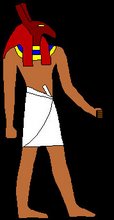
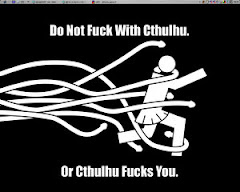
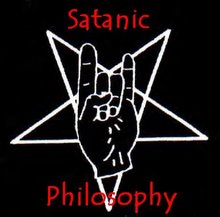
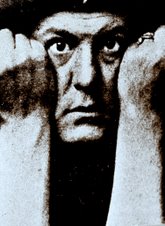
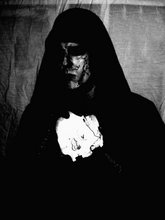
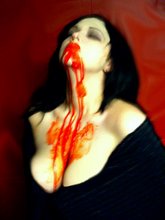
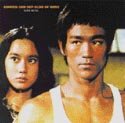
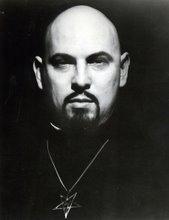

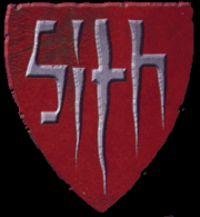
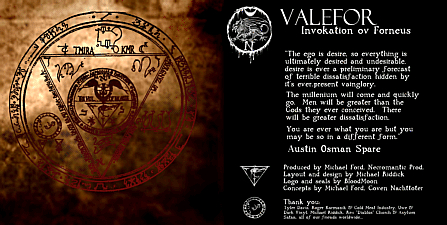




No comments:
Post a Comment